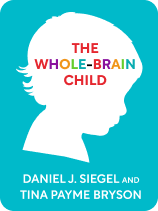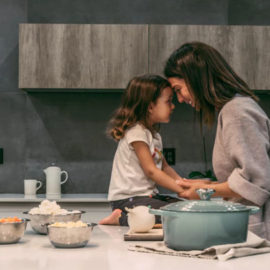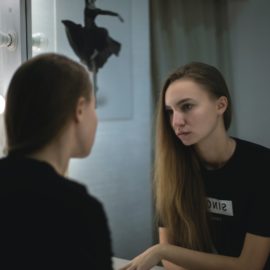

This article is an excerpt from the Shortform book guide to "The Whole-Brain Child" by Daniel J. Siegel and Tina Payne Bryson. Shortform has the world's best summaries and analyses of books you should be reading.
Like this article? Sign up for a free trial here .
What is whole-brain parenting? What can you do to stimulate the healthy development of your child’s brain?
The whole-brain parenting method is based on fostering the integration of different areas of the brain. Since various regions of the brain mature at different paces, children are ruled by emotions because their brain is not yet fully integrated.
Keep reading for more about whole-brain parenting.
What Is Whole-Brain Parenting?
The different parts of your brain work individually and in collaboration, similarly to employees within a company. Each job is distinctly different, but they all work together in order to make the company successful; if the company were missing any one of these employees, the organization would either be extremely dysfunctional or fail altogether.
The same is true for your brain. Each region of your brain is responsible for a distinct set of tasks. You function optimally—socially, mentally, and emotionally—when the different parts of your brain are integrated. Maintaining integration is the basis of the whole-brain parenting method.
Think of integration like navigating a boat down a river: The ride is smoothest when you’re floating right down the middle, in a balanced, integrated way. If you become dis-integrated and veer too much to one side, you risk getting tangled in the chaos of one riverbank—where you feel like you don’t have control—or stuck in the obstacles on the opposite riverbank—where you become too rigid and attempt to control everything. Dis-integration leads to behaviors such as aggression and emotional withdrawal.
People of any age can have moments of dis-integration, but children face the added challenge of having a brain that isn’t fully developed. Since various regions of the brain mature at different paces, a preschooler is ruled by emotions because her sense of logic is still developing.
Integration Rewires the Brain
Research shows that experiences shape your brain throughout life. This happens through a multistep process:
- When you experience something, certain neurons—or brain cells—fire a charge through their attached circuits. Which neurons fire depends on what you experience; the smell of pancakes activates certain neurons, while a feeling of happiness makes different neurons fire.
- When neurons fire together, they create a connection—for example, linking the smell of pancakes with the feeling of happiness.
- Repeated experiences strengthen this association, rewiring the brain to trigger happiness when you smell pancakes.
As a parent, you shape most of your child’s early experiences—from the way you discipline to the music you play—meaning that you have the power to mold your child’s brain through those experiences. When you help your child integrate the various regions of her brain, her brain creates these neural connections between those regions. The more you help her practice integration, the more it strengthens those connections, so that her brain physically becomes more integrated. And, since rewiring continues throughout life, it’s never too late to integrate your own brain using the whole-brain approach.

———End of Preview———
Like what you just read? Read the rest of the world's best book summary and analysis of Daniel J. Siegel and Tina Payne Bryson's "The Whole-Brain Child" at Shortform .
Here's what you'll find in our full The Whole-Brain Child summary :
- How to increase your child's self-awareness and emotional control
- Why the logical and emotional sides of the brain have to work together
- How to figure out why your child is afraid of something






